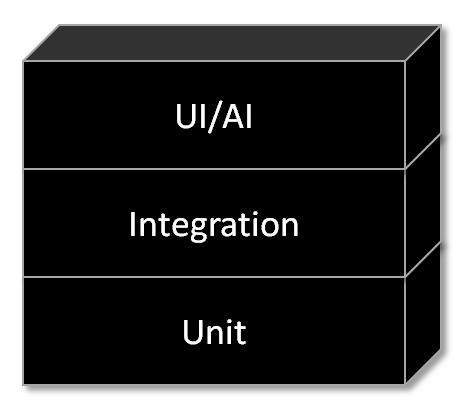In a developer testing training, I turn the participants’ first encounter with mock objects and stubs into an exercise in developing hand-written test doubles. Then, if time permits, we reiterate using a mocking framework. In this post, I’ll explain why.
Terminology plays a central role in developer testing. By being precise in our wording and labeling, we become accurate when it comes to selecting a technique. Think of it like:
- Dragon – Bring a shield and sword
- Vampire – Bring garlic, holy water, and a wooden stake
- Werewolf – Bring silver projectiles
If we know exactly what something is, the chances are greater that we bring the right gear. Having browsed through numerous codebases, I can say that few concepts are as abused as the “mock”. Here are some of the interpretations that I can recall having seen throughout the years:
- Stub
- Organizer class/entity
- System that isn’t quite ready for production
- Database with test data
- Stub or fake that replaces a system or component
To explain the purpose of the mock object, I get the participants to implement it roughly like this:
public class HandwrittenMock implements CollaboratorOperations {
private boolean wasCalled;
private int parameterValue;
@Override
public void doSomething(int parameter, String dummy) {
wasCalled = true;
if (parameter == 42) {
parameterValue = parameter;
}
}
public void verify() {
assertTrue("doSomething() must be called", wasCalled);
assertEquals("parameter must match expected value", 42, parameterValue);
}
}
Endless variations are possible, of course, but the central point remains quite clear: a mock object can fail a test, whereas a stub can’t. Yes, the assertions in the class are clunky, but they get the message across. Apart from explaining what a mock object is actually supposed to be doing, this approach demonstrates that there’s no magic involved (although the things some frameworks need to do to get mock objects working may seem magic).
Still, why go through all this hassle to defend a word? There are two reasons. The first is general clarity and simplicity. You’ll be reading your tests differently knowing that something called “stub” will only provide indirect input, and something called “mock” will be performing verifications to check that a certain interaction has happened in a certain manner.
And there are solutions like this, of course:
Person person = mock(Person.class);
when(person.getFirstName()).thenReturn("Joe");
when(person.getLastName()).thenReturn("Blow");
when(person.getYearOfBirth()).thenReturn(1990);
…which you don’t want in your code. (Note, by the way, that this is one of those cases where the framework makes you call a stub a mock.)
Second, more important, is that we want to avoid the domain of interaction testing as much as possible. While we certainly can design code and tests well, it’s still a fact that verifications do require knowledge of how two program elements interact with each other, and they encode that knowledge in the test. This tends to make tests brittle.
In summation, by having my trainees implement mocks and stubs “by hand” once, I hope to:
- Emphasize the distinction between a stub and a mock (and a spy for advanced participants)
- Show that mocks are not magic
- Have people write clean tests where the purpose of the test double is clear
- Reduce the number of tests that revolve around unnecessary interactions
- Avoid clearly bad constructs (like in that
Personexample)

